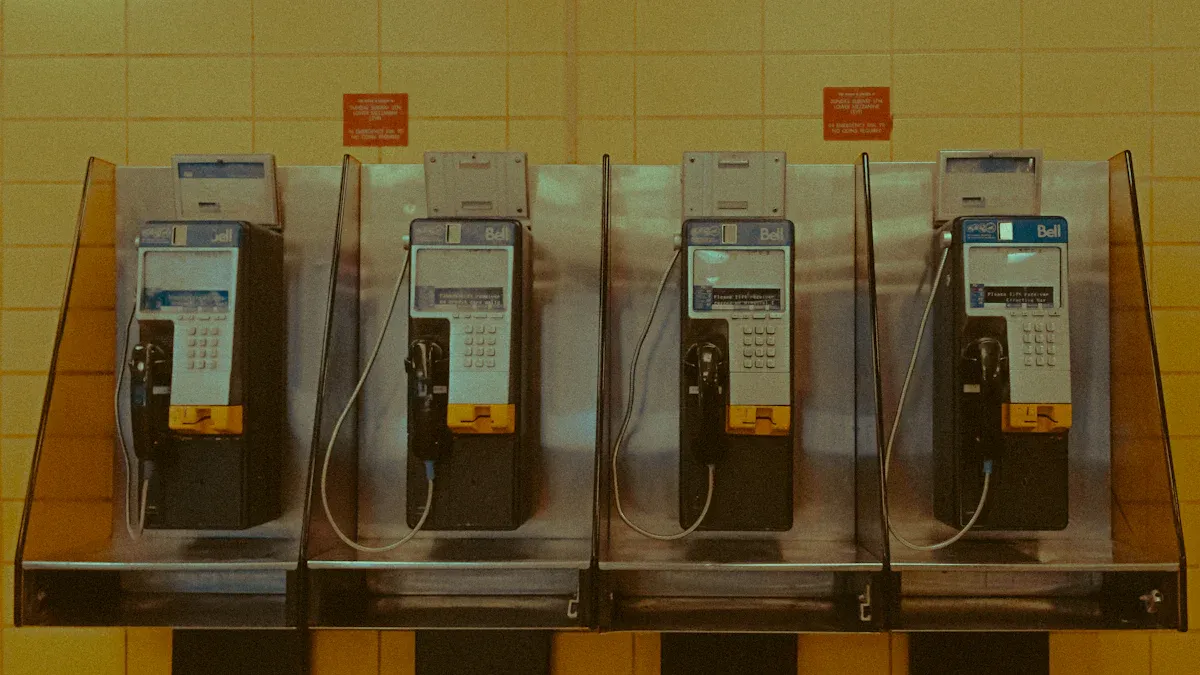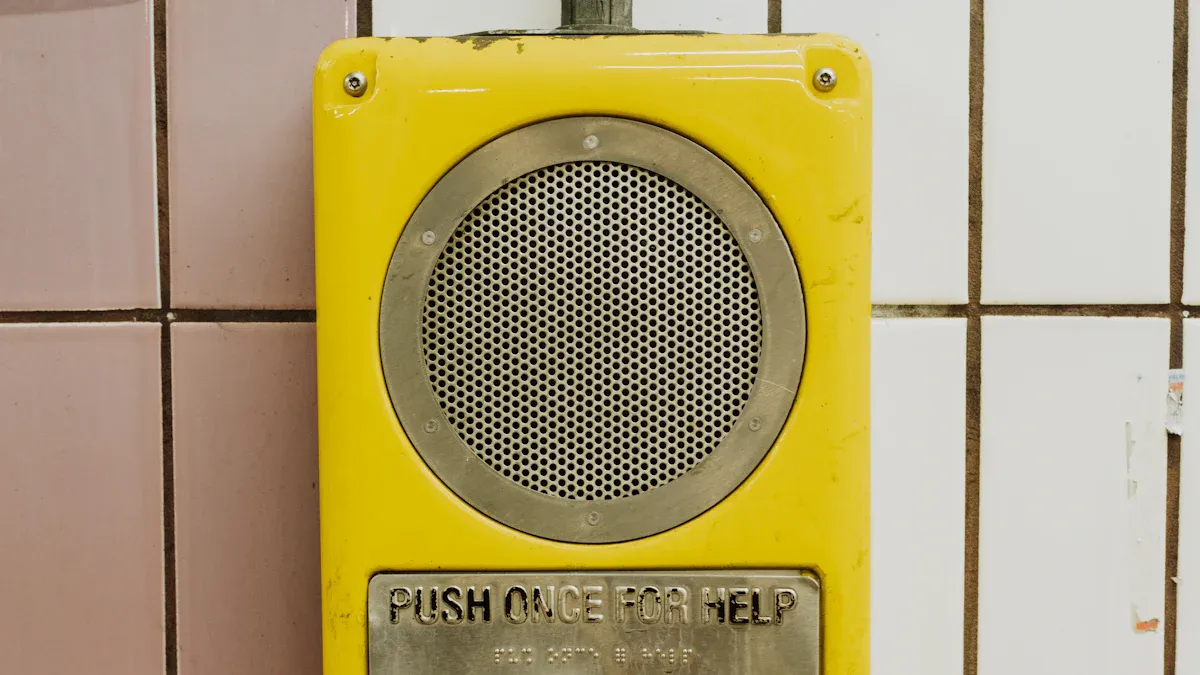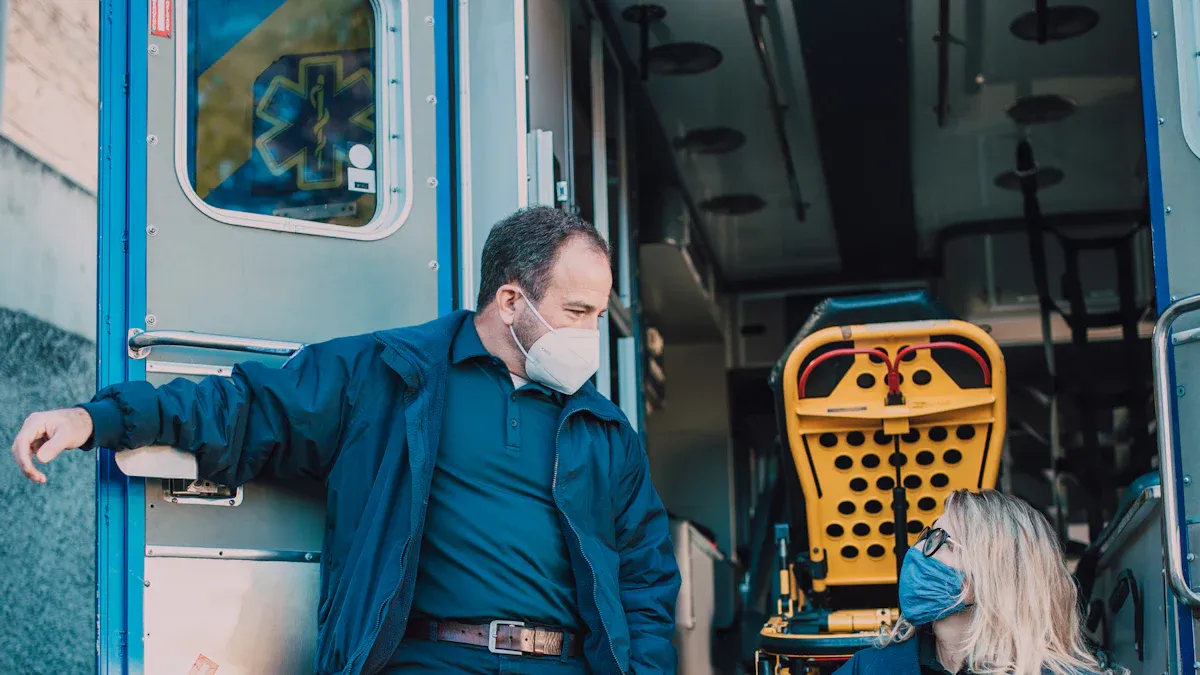
A rugged emergency telephone stands out as a reliable device built for harsh environments. This equipment ensures people can reach help fast, even in remote areas. Whether someone uses an auto dial emergency telephone, a traffic emergency Telephone, or an SOS emergency Telephone, these tools offer dependable communication during critical moments.
Key Features of a Rugged Emergency Telephone

Durable and Weatherproof Construction
A rugged emergency telephone must survive in tough environments. Manufacturers use strong materials to build these devices. Common choices include:
- Heavy-duty 18 gauge steel with continuous seam welding
- Water-resistant designs with gasketed lids
- Polycarbonate and fiber reinforced plastic (FRP)
- Painted steel and aluminum back plates
These materials protect the telephone from rain, dust, and corrosion. Many models have an epoxy polyester textured finish for extra resistance to rust. Devices often meet NEMA Type 4, 4X, or IP66 ratings, which means they block dust and water. Some enclosures support telephones up to 5.5 inches deep, showing their robust build. These features allow the rugged emergency telephone to work in places like subways, railways, petrochemical plants, and offshore sites.
Tip: Look for telephones with weatherproof and UV-resistant enclosures for outdoor use. This ensures long-lasting performance even under direct sunlight.
Resistance to Vandalism and Tampering
Public areas often face vandalism and tampering. A rugged emergency telephone uses several features to stay operational:
- Vandal-resistant buttons that withstand intentional damage
- Tamper-proof hardware and screws to prevent unauthorized access
- Stainless steel or painted steel enclosures for extra strength
- Armored handset cords made from stainless steel
- Weatherproof and corrosion-resistant handsets
| Feature/Aspect | Description |
|---|---|
| Construction Materials | Painted CRS steel, brushed stainless steel faceplates |
| Hardware | Tamper-proof hardware to prevent unauthorized access |
| Design Purpose | Designed for high-risk public areas (dorms, garages, transit centers) |
| Vandal Resistance | Vandal-resistant and tamper-proof |
| Operational Reliability | High survivability, alert functions, secure network compatibility |
| Installation & Use | Indoor/outdoor use, easy installation |
| Additional Features | LED indicators, beacon/strobe, automatic talkback VOX operation |
Many models hold certifications like CE, FCC, RoHS, and ISO9001:2015. IP ratings from IP55 to IP66 confirm protection against dust and water. These features help the rugged emergency telephone remain reliable, even in places where vandalism is common.
User-Friendly Operation in Emergencies
During an emergency, people need to use the telephone quickly and easily. Designers focus on features that help everyone, including those with disabilities:
- Large, clearly visible SOS buttons placed for easy access
- Easy-to-press buttons that activate with little force
- Bright, high-contrast letters and symbols for better visibility
- Lightweight designs for comfort and portability
- Simple on/off operation for fast use
Some models include tactile inputs and Braille for users with vision loss. Adjustable text sizes and screen reader compatibility help people with different needs. Vibration patterns and multimodal communication options, such as voice or pictograms, make the device more accessible. These features ensure that anyone can use a rugged emergency telephone, even in high-stress situations.
Note: Devices with high-contrast themes and large buttons are easier for elderly users or those with disabilities to operate during emergencies.
How a Rugged Emergency Telephone Works in Critical Situations

Reliable Communication in Extreme Environments
A rugged emergency telephone must perform in the harshest conditions. Designers use advanced materials and engineering to ensure reliability. These devices often feature:
- Reinforced PVC or ABS materials that meet strict safety standards.
- Weatherproof covers that shield the phone from rain, snow, and wind.
- Acid-neutralizing and corrosion-resistant components to prevent damage from chemicals.
- Cooling systems and heat-resistant materials to avoid overheating in extreme temperatures.
- Sealed covers that block dust and moisture, keeping internal parts safe.
- Proprietary coatings and anti-humidity finishes for extra durability.
These features allow the telephone to function during hurricanes, floods, wildfires, and even in remote wilderness. Emergency teams, construction workers, and first responders rely on these phones when other communication tools fail. The rugged emergency telephone has proven its value in environments such as oil rigs, mining sites, and disaster zones.
Tip: Always check the environmental ratings of a telephone before installation. Devices with IP66 or higher ratings offer the best protection in extreme conditions.
Power and Connectivity Options
Power supply and connectivity play a crucial role in the operation of a rugged emergency telephone, especially in remote or disaster-affected areas. Manufacturers provide several solutions to ensure these devices remain operational:
- Power-over-Ethernet (PoE) allows the phone to receive both power and data through a single Ethernet cable. This method works well in outdoor or remote locations without direct electrical access.
- Solar power systems use solar panels and batteries sized for the installation site. This setup ensures the telephone works even when no wired power is available.
- Analogue phones can draw power directly from the telephone line, making them reliable during power outages.
- VoIP and GSM/3G models require an additional power source, usually 12V DC or PoE.
- Weatherproof and corrosion-resistant enclosures protect the power system from environmental hazards.
- Chargers and batteries are often mounted inside the enclosure, providing self-sufficiency in isolated areas.
For connectivity, satellite phones stand out as the most reliable option. They provide global coverage, connecting directly to satellites and bypassing damaged or overloaded terrestrial networks. Cellular phones offer convenience but depend on local towers, which may not be available in remote regions. Landline connections, while stable, are less flexible and not always practical in challenging environments.
| Technology/Component | How It Ensures Connectivity When Traditional Networks Fail |
|---|---|
| Satellite Phones | Operate independently of local infrastructure, offering global coverage and reliable use in remote or disaster areas. |
| Landline Telephones | Function during power outages and network congestion, providing stable connections. |
| Bi-Directional Amplifiers | Strengthen weak radio signals, ensuring communication inside buildings or signal-blocked areas. |
| Distributed Antenna Systems | Distribute amplified signals throughout complex structures, reaching basements and stairwells. |
| Two-Way Radios | Use dedicated frequencies, avoiding overload and failure during emergencies. |
| Emergency Notification Systems | Send mass alerts through multiple channels, ensuring messages reach recipients even if some networks are down. |
Enhanced Safety and Fast Response
A rugged emergency telephone enhances safety by enabling rapid and reliable communication. In high-risk environments, every second counts. Quick access to emergency services can save lives and reduce injuries. For example, survival rates for heart attacks drop by 7% for every minute of delay. Stroke patients lose millions of brain cells each minute without treatment.
Modern emergency telephones often include panic buttons, silent alarms, and real-time location tracking. These features allow users to discreetly call for help, even in dangerous situations. Wearable panic buttons provide mobility for workers in isolated areas, while fixed wall-mounted units protect stationary locations like hospital wards or retail counters.
Note: Silent alarms can alert security teams without escalating a situation, keeping both users and responders safer.
Legal guidelines recommend regular testing and training to ensure everyone knows how to use the system. Technological advancements, such as mesh networks and redundant pathways, guarantee communication even when cellular coverage is poor. These systems have proven effective in environments like hospitals, hotels, and remote worksites.
A rugged emergency telephone has been successfully deployed in some of the world’s most challenging environments:
- Natural disasters, including hurricanes, earthquakes, and wildfires.
- Remote expeditions in wilderness areas with no cellular coverage.
- Maritime and aviation sectors operating far from terrestrial networks.
- Military operations in hostile or isolated regions.
- Humanitarian missions in crisis-affected locations.
These deployments highlight the importance of reliable emergency communication for safety and fast response.
A rugged emergency telephone delivers vital communication in hazardous or remote locations. Industries such as highways, healthcare, and construction rely on these devices for safety and rapid response.
Investing in these systems improves compliance, reduces costs, and prepares organizations for future advances in emergency technology.
FAQ
What environments require rugged emergency telephones?
Factories, tunnels, highways, and remote sites need rugged emergency telephones. These locations face harsh weather, dust, or vandalism. Reliable communication ensures safety for workers and visitors.
How do users operate a rugged emergency telephone during an emergency?
Users press a large, clearly marked button. The phone connects directly to emergency services. Simple instructions guide users. Bright colors and symbols help everyone find and use the device quickly.
Can rugged emergency telephones work without electricity?
Many models use backup batteries or solar panels. Some analog phones draw power from the phone line. These features keep the telephone working during power outages or disasters.


